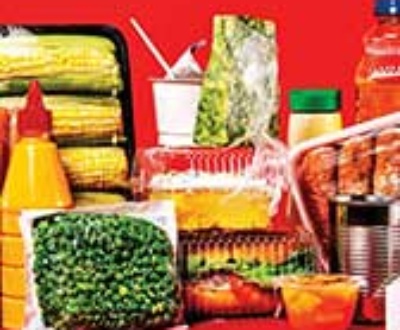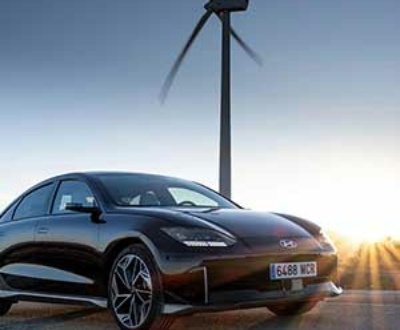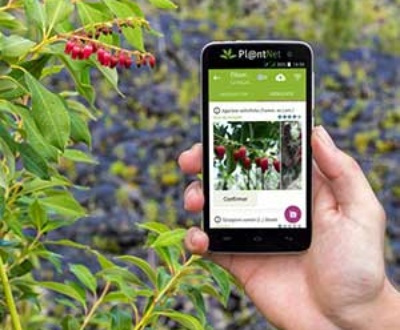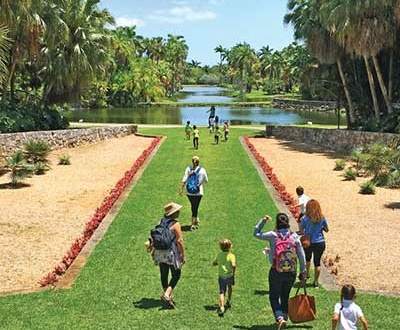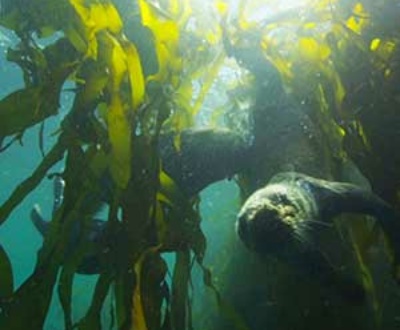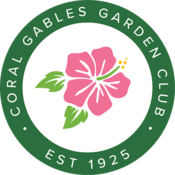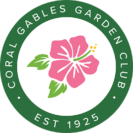I do like living in South Florida!! It’s early February and I step out into my yard and I see an orchid plant I took outside after it bloomed in the living room with 3 new spikes and buds. And I step out my kitchen door and wait for a hungry Monarch to eat its fill on some porter weed.
I’ve got milkweed planted out there and boy do I have eggs and caterpillars on them. It’s really the “build it and they will come” idea that sparked the baseball movie Field of Dreams – put in the plants and they will come!
Connect To Protect
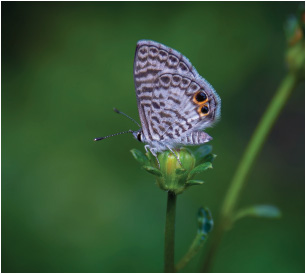 Right now I have coontie and lantana involucrata for the Atala’s, Corky Stem Passionvine for the Zebra Heliconias and of course that milkweed. And two types of Cassia trees for the Sulphurs. But I just picked up my Fairchild “Connect to Protect” plants Saturday and I am really going to become a butterfly attractor with these!
Right now I have coontie and lantana involucrata for the Atala’s, Corky Stem Passionvine for the Zebra Heliconias and of course that milkweed. And two types of Cassia trees for the Sulphurs. But I just picked up my Fairchild “Connect to Protect” plants Saturday and I am really going to become a butterfly attractor with these!
I got Pineland Croton which is a larval host plant for Florida Leafwing and Bartram’s Scrub Hairstreak butterflies and a nectar plant for Cassius Blues, Barracoa Skippers and Florida Dusty Wing butterflies.
And, I got Bahama Senna which is a larval host plant for Cloudless Sulpher, Sleepy Orange and Orange Barred Sulphur butterflies.
Also Narrow Leaved Golden Rod which hosts caterpillars of several native species and is a nectar plant for native bees and butterflies and Pineland Clustervine which attracts bees and butterflies and food for birds.
When these new plants get rolling the joint will be jumping! But don’t think you have to have only natives, I have old roses as well. Just get out there and plant and enjoy. Remember all you have to do is email your name, address and phone number to ConnectToProtect@fairchildgarden.org to get started. Daniela Champney of Connect to Protect will be our March 5 Garden Talk speaker at the Farmers Market.
More Good Garden Talks
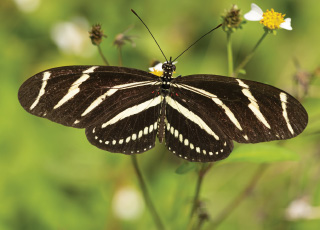 The rest of our March line up is March 12 “Spring has Sprung”, March 19 “Gems on Wings—South Florida Butterflies” and March 26 “Fighting Climate Change with Butterflies or Saving Butterflies to Save Ourselves”. This last talk is by a very neat organization called Bound By Beauty.
The rest of our March line up is March 12 “Spring has Sprung”, March 19 “Gems on Wings—South Florida Butterflies” and March 26 “Fighting Climate Change with Butterflies or Saving Butterflies to Save Ourselves”. This last talk is by a very neat organization called Bound By Beauty.
What Bound by Beauty discovered is that provided you use no pesticides—this includes weed and feed products—little tiny native plants that provide host and nectar for butterflies will appear in your lawn. Of course, this is how the original experimental butterfly patch at Bird and Toledo came about. The President of the Miami Blue Chapter of the North American Butterfly Association was walking across the land that the City purchased here for a future park and it hadn’t been mowed lately. He spotted 27 species of butterflies feasting on the plants and laying their eggs.
Bound by Beauty has created a lovely children’s program they call Swale Celebration where they show children pictures of the plants, give them magnifying glasses and a slate to go out and identify the butterfly plants. I hope we can do this some time for our Coral Gables children! And, think about letting those little butterfly plants grow in your lawn!
More Incredible Butterfly/Moth Stuff
I watched a show on PBS Nova called Butterfly Blueprints. 5,000 years ago the Chinese figured out how to domesticate the Bombyx Mori moth to produce silk from the threads they make to weave their cocoons.
Scientists have figured out how to isolate the two proteins that make up that thread and they can float them in water and create a flexible gel or a material as tough as Kevlar. The hard material can be worked on ordinary machines to make screws. These screws can be used in hip and knee replacements where they now use titanium. BUT THE BODY WILL NOT REJECT THESE SCREWS—there is no inflammatory reaction, the screw will integrate with the living tissue. This is huge—I’ve known people who have had to have their hip surgery re-done ten years after the original because the metal is bleeding into the blood stream…
In liquid form the protein can be combined with chemicals that react in the presence of bacteriological or viral threats. They can make an ink from this that can be painted on say protective gloves so the printed word will change color when contaminated. It can turn objects into sensing objects.
All this in addition to being pollinators and caterpillar food for baby chicks and of course beautiful!
Good Stuff
Bugs Across the Globe are Evolving to Eat Plastic
(The Guardian 12/14/21) As we all know millions of tons of plastic are dumped into the environment every year and the pollution now pervades the planet. What has happened over the last 70 years is that microbes have evolved to eat plastic. The enzymes have evolved differently to deal with the different polymer types they encounter. Scientists are in the process of tweaking these enzymes to create ones even better at breaking down say plastic bottles six times faster.
About the Author

Linda Lawrence Waldron currently writes the Green Gables column in Gables Living Magazine. Linda was Chairman of the Garden Club's Coral Gables Library Butterfly Garden Committee.
Sign up here for email notifications about new Green Gables articles!
More from our blogs
See all postsRecent Posts
- April 2023 April 1, 2024
- Good News on Environmental Plastics February 1, 2024
- Material World / Plant World January 1, 2024
Leave a Comment cancel
This site uses Akismet to reduce spam. Learn how your comment data is processed.



